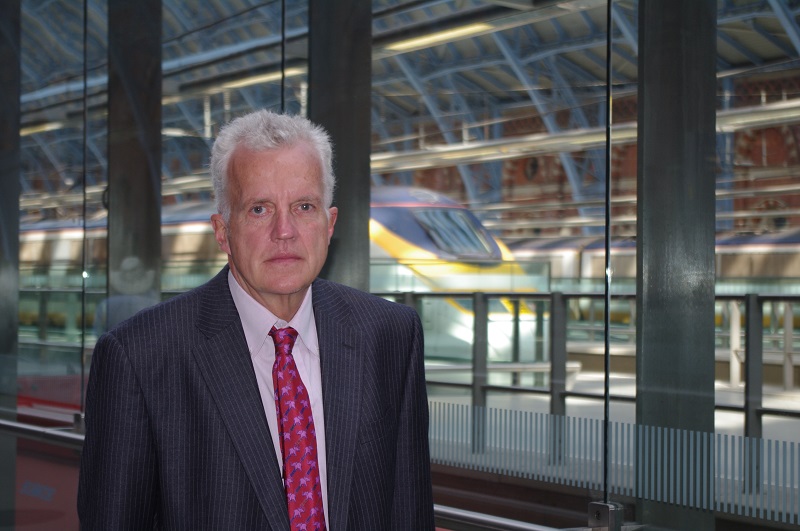When the Channel Tunnel opened 10 years ago Friday, it was hailed as an engineering marvel, a new paradigm for the private financing of public- works projects and a way to integrate Britain into a continent it had always held at arm’s length. But it has not worked out that way: while the 31-mile- tunnel linking Folkestone and Calais was a technological success, it’s been a miserable failure both financially and politically.
These two failures are linked. Had the tunnel inspired the two countries to forge closer links and made the border crossing an irrelevance — as is the case with most of the other borders within the old European Union — then traffic would have been much greater.
But that has not happened. Consequently, revenues from the tunnel have been well below expectations and the company in charge, Eurotunnel, is effectively bust — which helps explain why the 10-year anniversary passed with scant celebration. Eurotunnel has debts of $11 billion and its income from passengers and freight is not enough to pay even the interest.
In a desperate attempt to save the company and the value of its stock, a group of small French shareholders ousted Eurotunnel’s board in April. The shareholders want the British and French governments to bail out the company, but their action is more likely to ensure that the banks move in to take over the tunnel — which will make their shares worthless.
While the tunnel is in many ways a technological success, it has a significant flaw: you can’t drive through it. In 1984, when Prime Minister Margaret Thatcher announced an effort to connect Britain and the continent — a surprising project for a politician dedicated to distancing herself from Europe — she hoped that the result would be a quick and convenient road connection with France. But that proved impossible. A channel bridge or a ventilated car tunnel (which would have required air chimneys reaching to the surface) would have been too dangerous in one of the world’s busiest shipping lanes. Instead, we ended up with a rather uninspiring and cumbersome rail link that cost $15 billion, more than twice the estimated pricetag.
The tunnel now offers shuttles carrying trucks and cars between the British and continental coasts, and through trains for freight and passengers, but none of these services have been successful. In particular, the number of passengers using Eurostar, the train service linking London with both Brussels and Paris, has been well below expectations, with a mere seven million passengers per year compared with original predictions of 17 million.
The builders had predicted that the tunnel would force its chief rivals — the cross-Channel car and passenger ferries — out of business. The ferries, however, still command 50 percent of the market. Many passengers prefer a one- and-a-half hour cruise with a view of the White Cliffs of Dover over a half- hour trip in a gloomy rail carriage with tiny windows. Those traveling through the tunnel do not even get a glimpse of the sea, a key mistake by the tunnel’s architects.
And then there are rivals that barely existed in 1994: budget airlines. There are 50 daily round-trip flights between London and Paris, most of them much cheaper than a Eurostar ticket; many travelers think planes are quicker even though the train is much faster city center to city center. The rail journey between central London and central Paris is two and a half hours; while the flight itself is only an hour, once airport travel is taken into account, the journey is much longer.
In truth, those high predictions of passenger volume were a bit of a con, intended to attract investors to what was supposed to be a wholly private project. The numbers were never really achievable, but were used to get guaranteed regular payments from the state-run railways for millions of phantom passengers. But those payments dry up in 2006, a deadline that has helped precipitate the current crisis.
The hard truth is that the private sector alone can never build these massive infrastructure projects because the risks are too great and the return is too small. Similar links, like the Oresund bridge between Denmark and Sweden, have been joint public-private ventures or financed entirely by the state.
The tunnel will survive. It will be worth keeping open because its revenue is greater than its operating costs — and, in any case, it would be far too embarrassing for the respective governments to mothball such a huge project. It will limp on, unloved and underused.
But the real cause of its failure is that Britain and France are no closer together today than a decade ago. The British have remained aloof from their European neighbors and the French show little inclination to tour the land of les Rosbifs, still preferring to head toward the Mediterranean at holiday time. Indeed, recent events confirm that Britain — or at least its government — is closer to its American ally than to France, Germany and Italy.
The last land link between Britain and France was worn away by storms after the last Ice Age. It seems we will have to wait until the next one for Britain to become truly part of Europe again.
